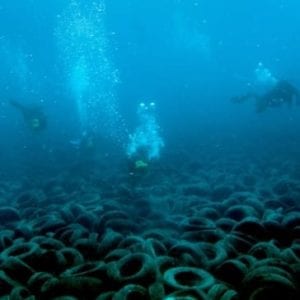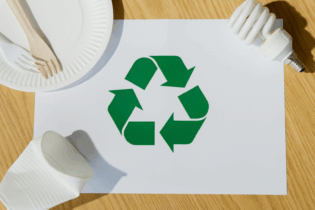As a filtration expert with many years of experience in water treatment and preparation, GKD is playing a key role in this pilot project. The mesh specialist company’s expertise will be used in the design and development of a suitable mesh for the filter bowls with multiple filtration rates – from very coarse-meshed structures with apertures of one to two centimeters, all the way up to meshes with apertures of absolute 6 μm.
On the basis of simulations and extensive laboratory analyses, GKD will develop suitable mesh structures that will then be manufactured on high-tech looms in its own weaving facility. Moreover, the Düren company’s engineering expertise will be invaluable for setting up the test. Proven solution partner The Technical University of Berlin, which is coordinating the project, chose GKD as a partner because the company had already successfully demonstrated its performance as a solution partner as project leader in the previous research program. Like its predecessor, the tyre debris in the environment research project will also run for three years. The other partners involved in the project are the Wessling test laboratory, the Prof. Dr. Sieker engineering company, which specialises in services and products relating to rainwater, and Continental Reifen Deutschland GmbH.
Microplastics are a global environmental problem that travels through the food chain and ends up on our plates. Around a third of these tiny particles are caused by worn tyres when the debris is washed into sewers by rainwater. Because sewage treatment plants currently cannot filter out the microscopic plastic particles, they enter the sea via canals and rivers. Once there, they are consumed by fish, mussels or birds with their food.
As a result, experts in science and industry worldwide are working feverishly to find a solution preventing these particles from entering our waters. Gebr. Kufferath AG (GKD), a giant in the manufacture of metal and plastic woven solutions and spiral fabrics is also contributing toward these efforts: the Parliamentary State Secretary for the German Federal Ministry of Education and Research (BMBF), Thomas Rachel, has now presented the technical weavers in Düren with funding of about €185,000 for a research project on tyre debris in the environment.
The figures are alarming; almost 46-million cars are registered in Germany. Each one of them creates almost two pounds of wear debris per tyre for every 31 000 miles driven. This equates to more than 110 000 tons of tyre wear debris per year, consisting of rubber, soot, mineral oils, additives and metallic substances. The polymers in the natural and synthetic rubber mixture are swept away by rainwater where they enter sewers as microplastic particles. From there they flow virtually unhindered toward the sea, which the latest studies suggest they are polluting on an unprecedented scale. The tiny plastic particles have now been found at ocean depths of 16 000 feet and even in the Arctic.
Micro-filtration with a maximum throughput
In order to develop effective preventive strategies, it is necessary to investigate wear factors, entry paths, spreading channels and their effects in detail. The objective of GKD’s research on tyre debris in the environment is to record the quantity of microplastics from tyre-wear debris in water from roads.
For this purpose, the quantities of wear debris are to be determined by means of wear tests and on-site sampling. Factors such as driving situations and tyre, vehicle and road types will be taken into account. A key task of this project is the development of baskets for taking samples. These must be able to withstand high water volumes while also reliably catching microplastic particles.








